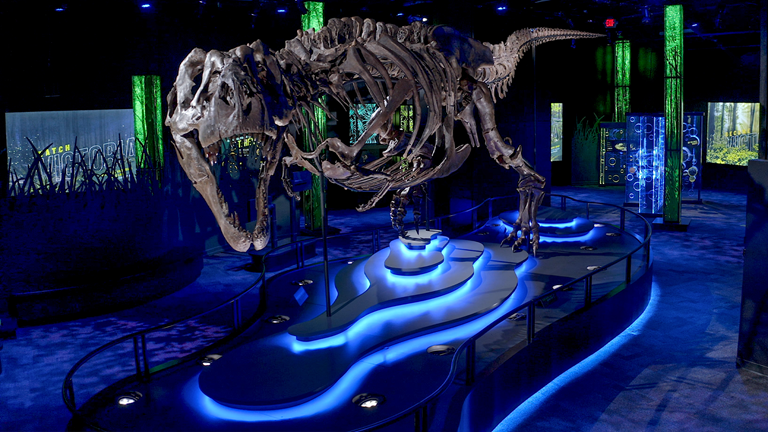
Dinosaurs! The ultimate theme to teach Primary Science
Teacher professional learning
- Date/Time:
- Wednesday 3 July 2024, 9:30am to 12:30pm
- Location:
- Melbourne Museum
- Duration:
- 3 hours
- Cost:
- $30 Museum teachers
$40 Non Museum teachers - (Includes entry into Victoria the T. rex exhibition and T.REX 3D IMAX documentary)
Come along to this highly interactive professional learning session and map where dinosaurs fit to the Victorian Curriculum. Discover how you can incorporate dinosaurs into your learning units for primary school students.
Learn more about dinosaurs with Priscilla Gaff, Melbourne Museum’s Science Education Producer and ask all your dinosaur and palaeontology questions on the day.
Melbourne Museum will host Victoria the T. rex, an interactive exhibition starring the real fossil skeleton of a 66-million-year-old Tyrannosaurus named Victoria.
This session will include a visit to the new Victoria the T. rex exhibition which is opening in time for Term 3, 2024. It also includes a 11:50am viewing of T.REX 3D IMAX documentary.
Teachers will be provided
- Information and resources about our existing Melbourne Museum education programs connected to Triceratops: Fate of the Dinosaurs exhibition.
- Entry to the new Victoria the T. rex exhibition.
- T.REX 3D IMAX documentary
-
Can I bring my children?
From 9:30am to 10:30am this session will be run as a teacher only event in the Learning Lab Studio.
If you would like your children to visit Victoria the T. rex exhibition and IMAX documentary with you, please ensure you book tickets to the following:
- Wednesday July 3rd, 10.30am Victoria the T.rex exhibition
- Wednesday July 3rd, 11.50am T. rex 3D IMAX documentary
Please book your children’s tickets well in advance, as it is Winter School holidays and we expect the exhibition will book out.
Teachers attending the professional learning program will not need to book themselves into either as they are included in the program's price.
Curriculum links
F to Level 2:
- Living things have a variety of external features and live in different places where their basic needs, including food, water and shelter, are met.
Level 3 to 4:
- Living things can be grouped on the basis of observable features and can be distinguished from non-living things.
Level 5 to 6:
- Living things have structural features and adaptations that help them to survive in their environment.
Join Museum Teachers
Join Museum Teachers for free general entry to all our Museums, discounts and to keep up to date with professional learning opportunities.